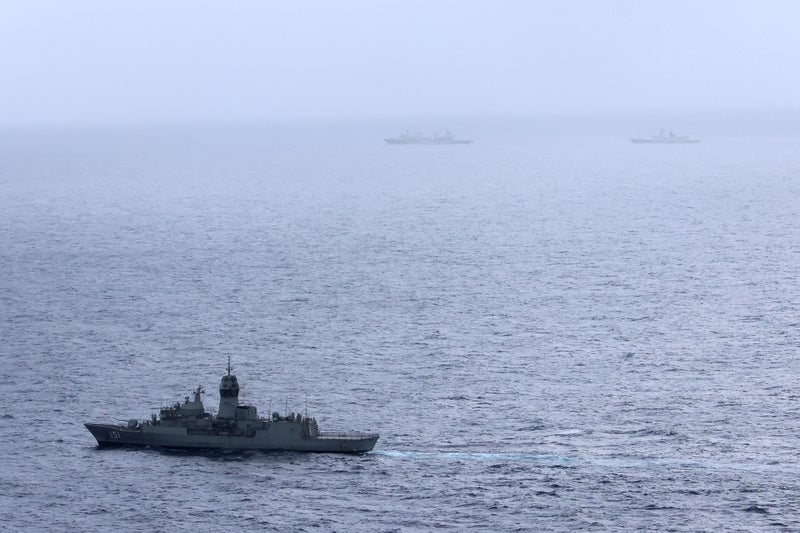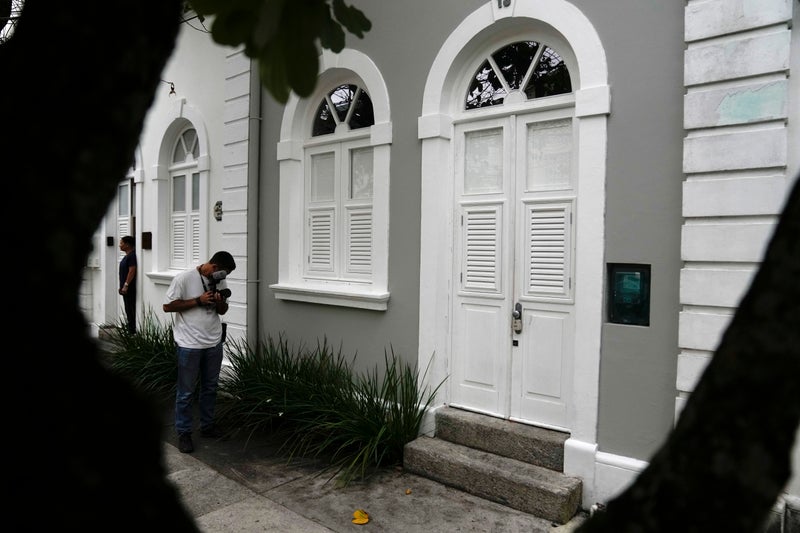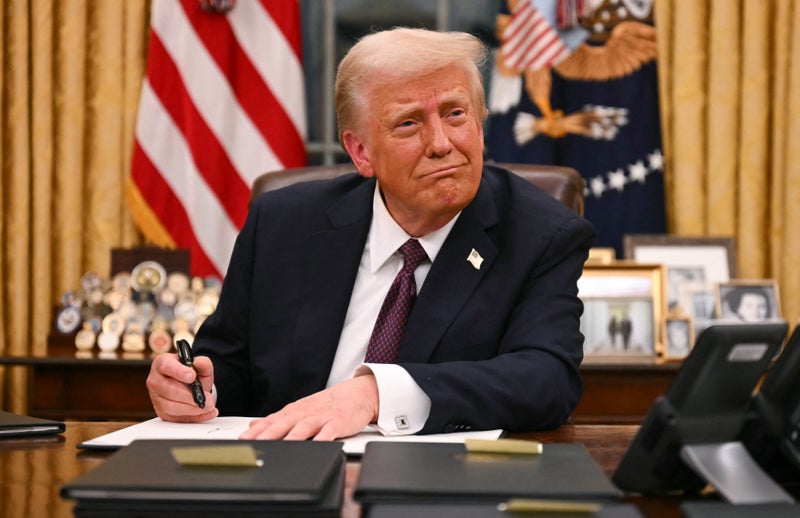Beijing’s unexpected exercises disrupted flights and fuelled regional security debates. The exercises were conducted by a trio of warships in the international waters beneath a busy commercial flight path, forcing at least 49 commercial flights to alter their courses allegedly with only minimal notice.
![[Sailors onboard the Royal Australian Navy ship HMAS Arunta looking at the People's Liberation Army-Navy (PLA-N) Fuchi-class replenishment vessel]](https://static.independent.co.uk/2025/02/25/10/39/AUSTRALIA-CHINA-DIPLOMACY-DEFENCE-q0gmvonl.jpeg)
On Friday and Saturday, three Chinese warships sailed through the Tasman Sea, an expanse that spans approximately 1,200 miles (1900km) between Australia and New Zealand. The naval task group, comprising a destroyer, a frigate, and a replenishment vessel, executed live-fire drills in an area that, while legally open to military activity, is heavily used by commercial airlines.
The vessels, part of China’s People’s Liberation Army (PLA) Navy, issued warnings to pilots over an emergency radio channel, signalling that the aircraft were flying above an active firing exercise, reported Reuters. This abrupt alert prompted a rapid diversion of flights, including those operated by major carriers such as Qantas, Emirates, Air New Zealand, and Virgin Australia.
Airservices Australia’s chief executive officer, Rob Sharp, explained during a parliamentary hearing on Monday that a Virgin Australia pilot was the first to alert the authorities. "So that was how we first found out about the issue," he said. The warning left little time for the commercial aviation community to adjust their flight paths safely, he said. Mr Sharp’s deputy, Peter Curran, added that the drill may have commenced roughly 30 minutes before the pilot received the notification, further exacerbating the operational challenges.
Pilots are alerted about military drills or rocket launches that could impact civil aviation well in advance through Notices to Airmen (Notams), typically 24 hours before the event. However, the Chinese warning was delivered on “a couple of hours’ notice”, a timeframe deemed by New Zealand’s defence minister, Judith Collins, as far too short to allow for proper diversion planning.
"This is opposed to what we would consider best practice, which is 12 to 24 hours’ notice so that aircraft are not having to be quickly diverted when they’re on the wing," Mr Collins told Radio New Zealand. Despite the criticism, Chinese officials maintained that they had provided sufficient warning. China's defence ministry spokesperson, Wu Qian, insisted that the vessels “repeatedly issued safety notices in advance”. He further accused Australian officials of “unreasonable accusations” and of deliberately exaggerating the situation.
Both Australian and New Zealand leaders have clarified that while the Chinese vessels operated within the legal confines of international waters, the lack of extended notification was nonetheless problematic. Australian defence minister Richard Marles described the manoeuvre as “not unprecedented, but unusual”, noting that the warships were operating within Australia’s exclusive economic zone (EEZ) – a region where Australia holds special economic rights over marine resources, though not full sovereignty.
The incident comes amid the recent easing of a Chinese trade freeze on Australian goods, which had been seen as a positive step toward mending relations. Political analysts suggest that the incident is emblematic of broader strategic tensions in the region.
Michael Shoebridge, former Australian defence and security official and director of Strategic Analysis Australia, said that the maneuvers could be a calculated response to Australia’s bolstered military ties with nations such as Japan, the Philippines, and Vietnam.
“If the Australian prime minister admits that this stabilisation of the Australia-China relationship has done nothing to stop China’s growing aggression towards our military in the wider region, it undercuts their signature foreign policy achievement,” he told the Associated Press.
Conducted in the Tasman Sea – a critical corridor between the two largest Western powers in the South Pacific – the exercises have drawn particular attention for occurring further south than typically expected. New Zealand’s military confirmed that at the time of the report, the Chinese vessels were approximately 218 nautical miles east of Hobart, Tasmania’s capital. This proximity has heightened regional security anxieties in both Wellington and Canberra, particularly as Beijing continues to cultivate security deals with small island nations throughout the South Pacific.
While New Zealand deputy prime minister Winston Peters is scheduled to visit China on 25 February, Ms Collins revealed that officials are “seeking assurance from the Chinese embassy” regarding future activities, given the unusually short notice and the shifting nature of the formations observed during the drills.
The sudden need to divert flights not only disrupted the schedules of commercial airlines but also posed potential risks to passenger safety. Air traffic controllers were forced to establish an exclusion zone on very short notice, with Mr Sharp and his deputy stressing that such emergencies could lead to larger operational disruptions, especially given the busy air corridors that criss-cross the Tasman Sea.






























.jpeg?auto=webp&width=800)
